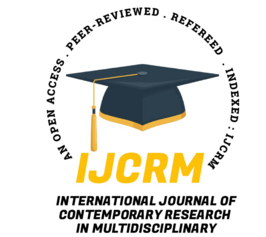International Journal of Contemporary Research In Multidisciplinary, 2025;4(1):127-131
Assess Bodh Gaya's Religious, Historical, and Tourism Significance
Author Name: Md. Ashikuzzaman Khan Kiron; Dr. Shamima Nasrin;
Paper Type: review paper
Article Information
Abstract:
One of the major pilgrimage sites associated with Buddhism is Bodh Gaya. Bodh Gaya bears a strong connection to the Buddha's achievement of Buddhahood. Consequently, the Buddha held Gaya in high esteem as a holy place during his life. Again, Buddha's disciples or followers worship him in various places around his memory. Various books have discussed the importance, significance, and history of Bodh Gaya. Since the legendary man Gautama Buddha attained Buddhahood at Bodh Gaya, this place has a distinct identity among people all over the world, especially among Buddhists. It also has a special attraction for tourists. That's why thousands and millions of people from all over the world come to visit and tour Bodh Gaya every year. Similar to the widespread recognition of the state of Bihar, Bodh Gaya has established India as a global map. The discussion article highlights the significant religious, historical, archaeological, and tourism aspects of Bodh Gaya. In which, besides other subjects, it is specifically mentioned how and what the Buddha spent his time on before and after attaining Buddhahood.
Keywords:
Pilgrimage, Religious, Historical, Bodh Gaya, Archaeological sites, Tourism
How to Cite this Article:
Md. Ashikuzzaman Khan Kiron,Dr. Shamima Nasrin. Assess Bodh Gaya's Religious, Historical, and Tourism Significance. International Journal of Contemporary Research in Multidisciplinary. 2025: 4(1):127-131
Download PDF





